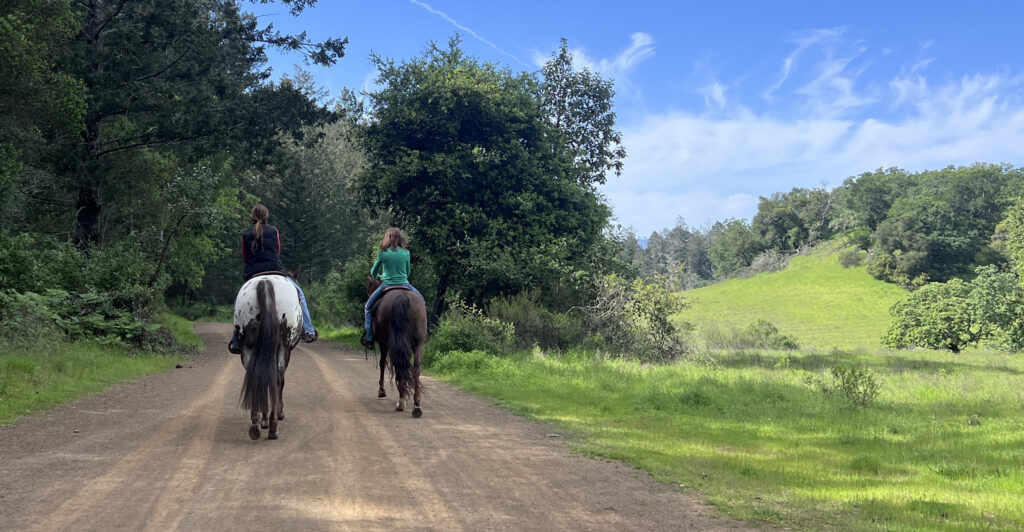Senate Bill (SB) 131 of 2025 includes a new California Environmental Quality Act (CEQA) exemption for public parks and nonmotorized recreational trail projects funded by the Safe Drinking Water, Wildfire Prevention, Drought Preparedness, and Clean Air Bond Act of 2024 (i.e., Proposition 4). Specifically, the bill simply states that CEQA “does not apply to any activity or approval necessary for or incidental to planning, design, site acquisition, construction, operation, or maintenance of public park or nonmotorized recreational trail facilities funded in whole or in part by the Safe Drinking Water, Wildfire Prevention, Drought Preparedness, and Clean Air Bond Act of 2024” (13 Public Resources Code [PRC] § 21080.57). This statutory exemption took immediate effect on June 30, 2025, and is available now for agencies developing park and trail projects. We present an overview of which actions are eligible for this exemption, discuss how it compares to other CEQA streamlining options for parks and trails, and provide some practical suggestions for the use of this new exemption.
Which Projects Are Eligible?
The new CEQA exemption is limited to public park and nonmotorized recreational trail projects that are at least partially funded by Proposition 4, and for those public park and trail projects, it offers a broad and powerful statutory exemption. It covers the full range of public parks and trails activities—from acquisition and planning/design through construction, operations, and maintenance. The exemption also does not identify specific environmental eligibility requirements or exceptions for unusual circumstances, which provides great flexibility in its application to projects.
Defining Public Park or Nonmotorized Recreational Trail Facilities
The exemption applies to “public park or nonmotorized recreational trail facilities,” which are not defined in detail in SB 131, CEQA, or Proposition 4. However, other sections of the California Public Resources Code include definitions that can be considered in determining a project’s eligibility. For example, the California Wildlife, Coastal, and Park Land Conservation Act defines a park as “a tract of land with outstanding scenic, natural, open-space, or recreational values, set apart to conserve natural, scenic, cultural, or ecological resources for present and future generations, and to be used by the public as a place for rest, recreation, education, exercise, inspiration, or enjoyment” (14 PRC § 5902). A recreational trail in the context of the State Park System is defined as a “pathway for non-motorized travel, including for bicyclists, hikers, and horsemen” (14 PRC § 5052). In the Recreation and Park District Law, recreational facilities are defined, in part, as “an area, place, structure, or other facility under the jurisdiction of a public agency that is used either permanently or temporarily for community recreation” (14 PRC § 5780.1).
Proposition 4 Funding for Parks and Trails
This exemption specifically applies to public park or nonmotorized recreational trail facilities funded in whole or in part by Proposition 4, a $10 billion bond measure focused on increasing California’s resilience to the impacts of climate change. While the spending plan for Proposition 4 is still being negotiated by the Legislature and Governor Newsom, the Governor’s proposed multiyear spending plan identifies $700 million in bond funds for park creation and outdoor access to be distributed from 2025 through 2040, with $286 million of this proposed for 2025–2026. The Governor proposed to appropriate the bond funds for park creation and outdoor access as follows:
- $200 million to the California Department of Parks and Recreation (CDPR) for the Statewide Park Program
- $200 million to the California Natural Resources Agency (CNRA) and the California Department of Fish and Wildlife (CDFW) for reducing climate impacts on disadvantaged communities and expanding outdoor recreation
- $100 million to the CNRA and other yet-to-be-determined agencies for enhancing natural resource value and expanding trail access
- $175 million to CDPR for deferred maintenance
- $25 million to CNRA for nature education facilities
While the details of the spending plan may change, it’s clear there will be a large investment of Proposition 4 funding in the creation of public parks and outdoor recreational access in the coming years. If a public park is developed with Proposition 4 funds, it may also be possible for multi-benefit outcomes in the park to qualify for this exemption. Park and trail projects funded by Proposition 4 could be led directly by state agencies and/or completed through grants to local governments, special districts, tribes, nongovernmental organizations, or others.
The new exemption will likely be used regularly by many agencies throughout California over the next few years. Because this exemption is tied to funding from a specific bond, this exemption should become less common over time as Proposition 4 funding is exhausted. Because the exemption covers maintenance of facilities funded by Proposition 4, it’s possible that an agency could be using this exemption for long-term maintenance of park and trail facilities that were originally funded by the proposition, even if the maintenance project is funded by a different source (although an effective categorical exemption, Class 1 – Existing Facilities, already covers maintenance).
How Does SB 131 Compare to Other Park and Trail CEQA Streamlining Options?
The passage of SB 131 provides a powerful new tool for fast-tracking CEQA for public parks and nonmotorized trails projects funded by Proposition 4. However, other CEQA streamlining approaches are already available for park and trail projects that are not funded by Proposition 4, and those approaches could be better suited to some situations.
Existing Categorical Exemptions
Existing categorical exemptions, such as those for operation, maintenance, repair, or replacement of existing facilities (Classes I and 2), minor alterations to land (Class 4), and transfers of ownership to create parks (Class 16), can and often do apply to small park and trail projects (CEQA Guidelines §§ 15301–15332). To qualify for a categorical exemption, substantial evidence should be available to show that none of the exceptions to the exemption apply. These exceptions prohibit the use of a categorical exemption if there is a reasonable possibility that the project would have a significant effect on the environment, damage scenic highways or historic resources, or be located on a hazardous waste site. In addition, the Class 4 exemption does not apply in specific mapped sensitive or hazardous areas.
The new SB 131 statutory exemption does not include any exceptions. Qualifying projects need only show that they are a public park or nonmotorized recreational trail facility and are receiving some level of Proposition 4 funding. The new exemption could also apply to larger and more substantial new park and trail projects and to expansions of existing facilities that would not qualify for the existing categorical exemptions. While categorical exemptions are a good option for small parks and trails projects that are not funded by Proposition 4, the new SB 131 exemption provides a stronger and simpler CEQA exemption for qualifying projects.
Existing Statutory Exemptions
Existing statutory exemptions, such as those for emergency projects or feasibility and planning studies, will still apply to certain parks and trails projects and planning efforts. The most similar existing statutory exemption is the recently enacted exemption for nonmotorized public access in Assembly Bill (AB) 2091, which was passed in late 2024. You can read our full analysis of the AB 2091 statutory exemption for nonmotorized public access, which created a new CEQA exemption for park districts and the Great Redwood Trail Agency (GRTA) when providing new nonmotorized public access to existing roads, trails, parking areas, and similar areas owned by the park district or GRTA. The AB 2091 statutory exemption can apply to activities that are not funded by Proposition 4. However, it does not cover park or trail facility construction and is subject to other limitations that do not apply to the new SB 131 exemption.
Use of a Program EIR with Later Consistent Project Streamlining
For public park or trail facilities that are part of a larger project or program, another CEQA streamlining option to consider is preparation of a program environmental impact report (EIR) (CEQA Guidelines § 15168). Program EIRs address the long-term implementation of a park or trail plan, program, or phased project, regardless of funding sources. Under a program EIR, “later activities” in the program, or the smaller implementation projects that make up the larger plan, project, or program, need only show they are “within the scope” of the program EIR and no additional CEQA review is needed. While the SB 131 exemption may apply to an individual project that is part of a long-term program, future projects under that program would not be eligible for the exemption if they are funded by different sources. For park and trail plans, programs, or projects where Proposition 4 funding is uncertain and/or with long planning and implementation horizons, it may be more advantageous to prepare a program EIR to secure long-term CEQA coverage that is not tied to a specific funding source. For example, the program EIR certified in 2012 by California Department of Parks and Recreation for streamlining environmental review of change-in-use proposals on existing state park roads and trails (such as when adding mountain biking) continues to serve the agency well today, including enabling consistency in proposal review and supporting application of standard environmental protections to avoid or minimize effects. (SB 131’s exemption does not list changing trail use as an exempted activity.)
Practical Suggestions for Using the New Exemption
Agencies considering using the new SB 131 exemption should keep a few practical issues in mind. We offer some suggestions below.
Filing the Notice of Exemption
To use this exemption, we recommend that the CEQA lead agency file a notice of exemption (NOE) form with the State Clearinghouse and, if the lead agency is a local agency, with the county clerk of the county where the project will be located. While a NOE is not required, it provides evidence that the SB 131 exemption was used for CEQA compliance and substantially limits the statute of limitations to challenge the agency’s use of the exemption. A discretionary best practice is to prepare a memo explaining why the lead agency determined that the project qualifies for the exemption. The memo could summarize the project, identify the specific Proposition 4 funding source and how it is applied to the project, and describe why the project qualifies as a public park or nonmotorized recreational trail facility. The memo can be considered by the decision-making body approving the project and would become part of the lead agency’s administrative record. No public review, noticing, or consultation with California Native American Tribes is required by CEQA with this exemption. Lead agencies may consider when and how to incorporate appropriate public and tribal involvement, if desired, supplemental to the CEQA process.
Other Regulatory Requirements Still Apply
It’s important to note that while this exemption addresses CEQA, it does not exempt any other state, federal, or local regulatory requirements, such as the California Coastal Act, California Endangered Species Act, CDFW Lake and Streambed Alteration Notification, federal Endangered Species Act, National Historic Preservation Act, or Clean Water Act. Because the new CEQA exemption covers any “approval necessary for or incidental to” qualifying projects, regulatory agencies should be able to rely on the new exemption for CEQA compliance when approving a qualified project. However, regulatory agencies’ authorities to require permit approvals are still in effect. Lead agencies using this exemption should coordinate with the appropriate regulatory and resource agencies early to confirm permitting requirements and avoid project delays.
Dealing with Proposition 4 Funding Uncertainty
As previously noted, this exemption only applies to public park and nonmotorized trail projects that are funded wholly or in part by Proposition 4; however, the details of the bond funding plan are not yet known. Many agencies are likely hoping to secure funding under Proposition 4 for their park and trail projects. If your project meets the requirements of this CEQA exemption, but has not secured Proposition 4 funding, it’s a good idea to contact the funding agency staff to understand upcoming grant opportunities and to determine whether your project may be a good candidate. If Proposition 4 funding is uncertain, then it may be prudent as a backup to begin assessing other CEQA compliance pathways for your project.
Final Thoughts
This new exemption is a powerful CEQA tool for accelerating the delivery of public park and nonmotorized trail projects funded by Proposition 4. It should substantially shorten the time and resources needed for CEQA compliance for qualifying projects, but it will not be perfect for every situation. Lead agencies should consider the full range of regulatory requirements and the outlook for Proposition 4 funding when developing environmental compliance strategies for park and trail projects. While SB 131 exempts qualifying projects from CEQA, agencies developing Proposition 4–funded public park and nonmotorized trails projects may still need to complete resource assessments, technical studies, and public engagement to develop environmentally sound projects and comply with other regulatory requirements.
If you have any questions about the SB 131 exemption for public park and nonmotorized recreational trail projects, please feel free to contact Adam Lewandowski, AICP; Lily Bostrom; or Nicole Greenfield at Ascent.





